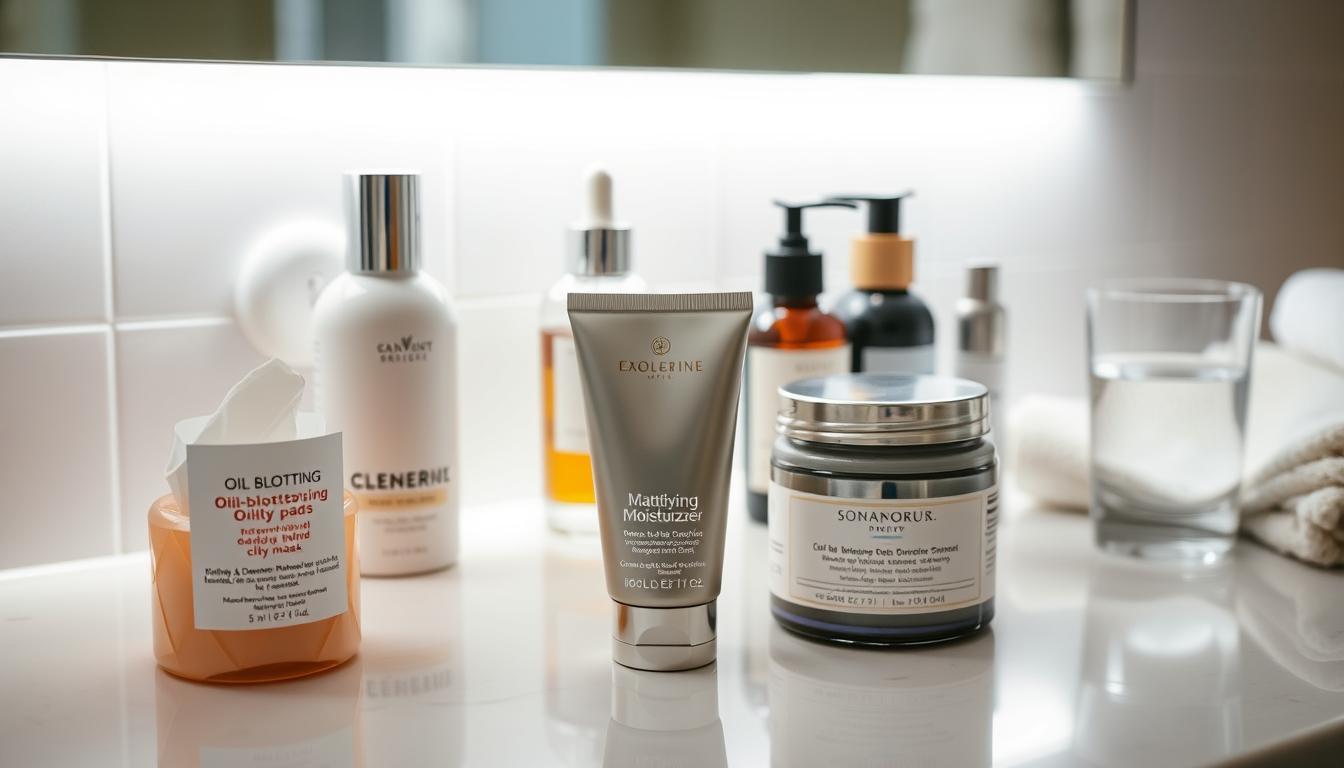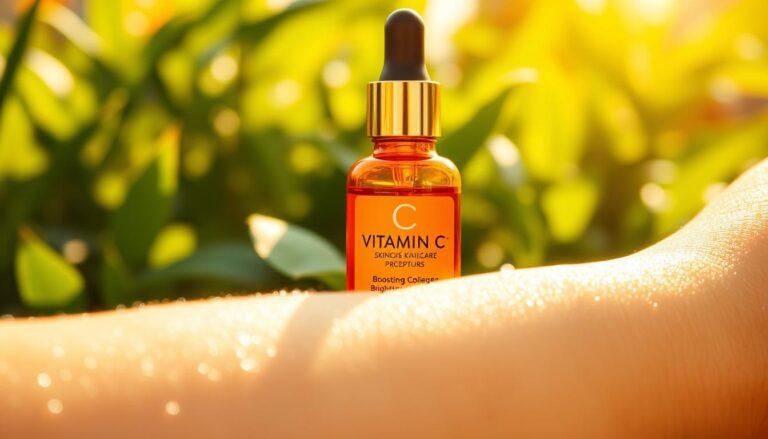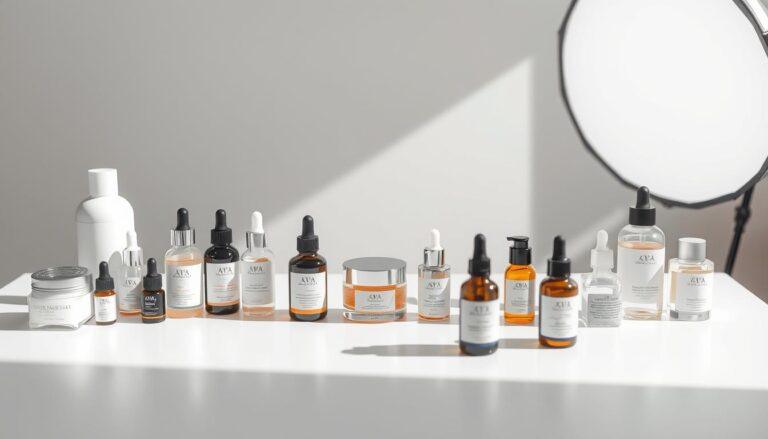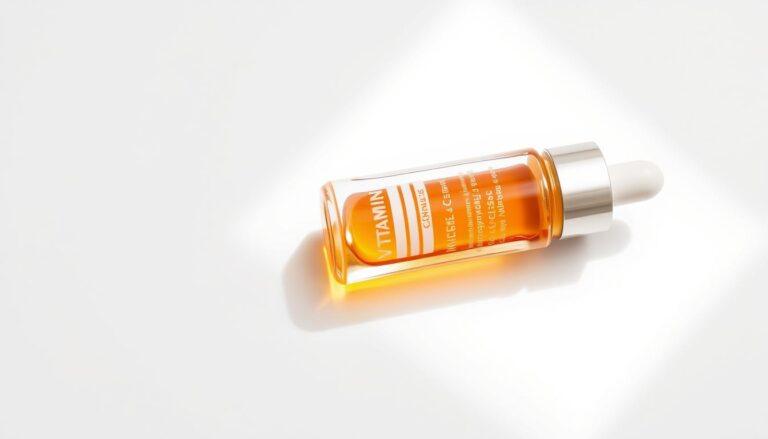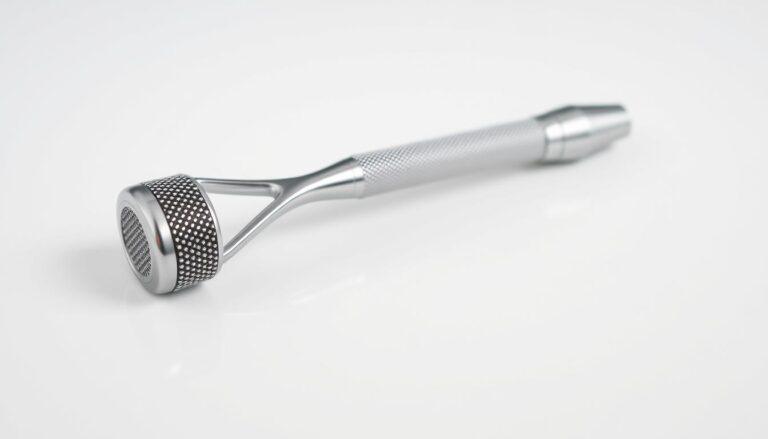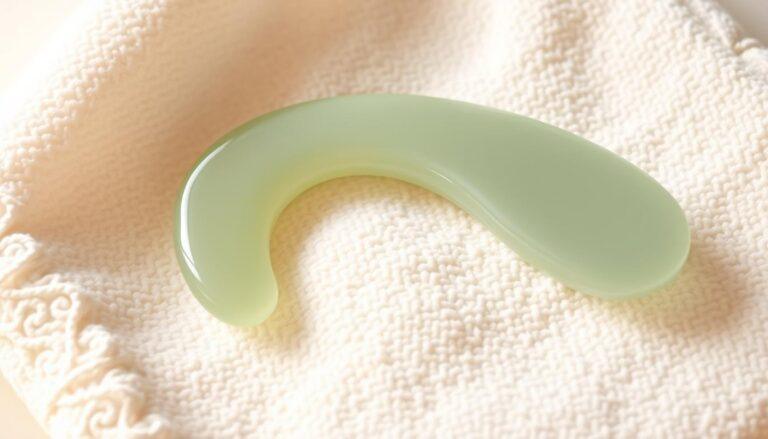Skincare Routine for Oily Skin: Complete Guide to Control Shine and Prevent Breakouts
Managing oily skin can feel like a constant battle, but it doesn’t have to be. I’m excited to share my complete guide to help you control shine and prevent breakouts effectively. Whether you’re dealing with excess oil or acne, a personalized approach is key to achieving balanced and healthy skin.
This guide is built on insights from dermatologists and trusted brands like CeraVe and La Roche-Posay. I’ll walk you through everything from cleansing to targeted treatments, ensuring each step is gentle yet effective. Let’s explore products that hydrate, balance sebum production, and maintain your skin’s protective barrier.
By the end of this article, you’ll have a clear, easy-to-follow plan tailored to your needs. Say goodbye to frustration and hello to a radiant, shine-free complexion!
Key Takeaways
- Personalized care is essential for managing oily skin effectively.
- Trusted brands like CeraVe and La Roche-Posay offer reliable solutions.
- Hydration and sebum balance are crucial for healthy skin.
- Gentle cleansing and targeted treatments can prevent breakouts.
- Consistency is key to achieving long-term results.
Understanding My Oily Skin
Understanding my skin type was a game-changer in managing its unique needs. For years, I struggled with shine and breakouts, unsure of how to address them effectively. It wasn’t until I took the time to learn about my skin that I found solutions that truly worked.
My Personal Skin Type Journey
My journey began with trial and error. I noticed my face often felt greasy by midday, and I dealt with frequent acne flare-ups. I tried countless products, but nothing seemed to help. It was only after consulting resources like the American Academy of Dermatology that I realized I had oily skin.
Oily skin is characterized by an overproduction of sebum, which can lead to clogged pores and breakouts. This imbalance often makes the face appear shiny, especially in the T-zone. Understanding this helped me choose products that targeted excess oil without stripping my skin.
Makeup also played a role in my journey. I learned that heavy foundations could exacerbate my issues, so I switched to lightweight, non-comedogenic options. This small change made a big difference in how my skin looked and felt.
Knowing your skin type is crucial when selecting products. For example, oily skin benefits from oil-free formulas, while combination skin requires a more balanced approach. My experience taught me that personalized care is key to achieving healthy, radiant skin.
If you’re unsure about your type, I encourage you to consult a dermatologist or trusted resources. Understanding your skin’s unique needs can transform your approach and help you achieve the results you’ve been looking for.
Observing Signs of Excess Oil and Breakouts
Spotting the signs of excess oil early can make a big difference. One of the most noticeable indicators is a shiny T-zone, which includes the forehead, nose, and chin. These areas tend to produce more sebum, leading to a greasy appearance.
Enlarged pores are another clear sign. When sebum overproduction occurs, pores can become more visible, especially in the T-zone. This can also affect the overall appearance of your skin, making it look uneven or textured.
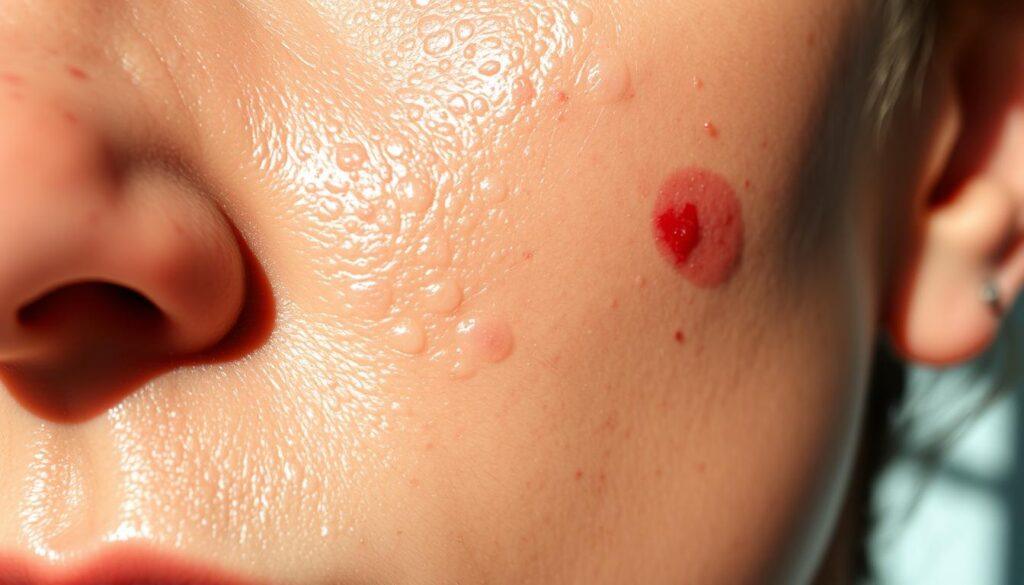
Breakouts often accompany excess oil, particularly in areas where pores are clogged. If you notice frequent acne flare-ups in the T-zone or along the jawline, it’s likely due to oil buildup. Monitoring these patterns helps tailor your approach to managing shine and preventing breakouts.
Identifying the T-Zone and Other Problem Areas
The T-zone is a common hotspot for oil production. However, other areas like the cheeks or jawline can also be problematic. I’ve found that waiting 30 minutes after cleansing helps me assess where oil accumulates most.
This simple method reveals which areas need extra attention. For example, if my forehead feels greasy but my cheeks remain dry, I know my skin leans toward combination rather than purely oily.
Distinguishing Oily from Combination Skin
Understanding the difference between oily and combination skin is crucial. Oily skin tends to produce excess oil across the entire face, while combination skin is oilier in the T-zone and drier elsewhere.
I’ve learned that using products designed for my specific type makes a significant difference. For oily skin, oil-free formulas work best, while combination skin benefits from a balanced approach.
By closely observing these signs, you can better understand your skin’s needs and choose the right products to keep it healthy and shine-free.
Skincare Routine for Oily Skin: Step-by-Step Guide
Crafting a daily plan to manage excess oil has transformed my complexion. By breaking it into morning and night steps, I’ve found a balance that keeps shine and breakouts at bay. Here’s how I do it.
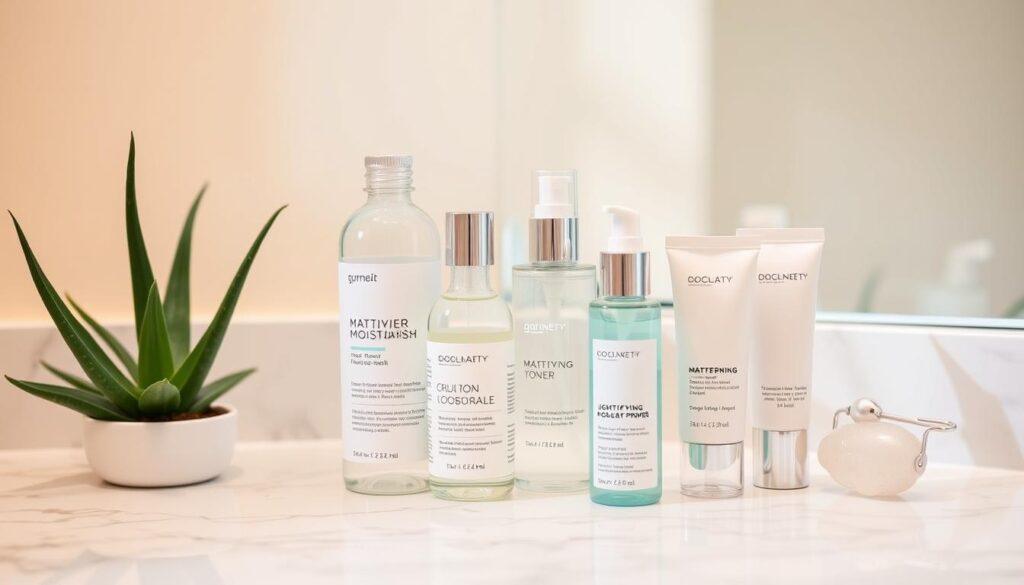
Morning Skincare Insights
Starting the day with a proper cleanse is essential. I use a gentle foaming cleanser from CeraVe to remove impurities without stripping my skin. This sets the foundation for the rest of my routine.
Next, I apply a lightweight serum with niacinamide to control oil production. La Roche-Posay’s Effaclar Duo is my go-to for its dual action on blemishes and shine. It’s a game-changer for keeping my face matte throughout the day.
Finally, I finish with a non-comedogenic sunscreen. Sun protection is crucial, and I love Neutrogena’s Oil-Free Moisture with SPF 30. It hydrates without clogging pores, making it perfect for my skin type.
Nighttime Skincare Essentials
At night, I focus on repairing and balancing my skin. I start with a double cleanse to remove makeup and impurities. The first step is an oil-based cleanser, followed by a water-based one like La Roche-Posay’s Toleriane Purifying Foaming Cleanser.
After cleansing, I use a toner with salicylic acid to unclog pores and prep my skin for treatment. Paula’s Choice Skin Perfecting 2% BHA Liquid Exfoliant works wonders for refining texture and preventing breakouts.
I finish with a lightweight moisturizer that contains ceramides. CeraVe PM Facial Moisturizing Lotion is my favorite because it hydrates without feeling heavy. It’s the perfect way to end my day.
| Product | Purpose | Brand |
|---|---|---|
| Foaming Cleanser | Morning Cleanse | CeraVe |
| Effaclar Duo | Oil Control | La Roche-Posay |
| Oil-Free Moisture SPF 30 | Sunscreen | Neutrogena |
| Toleriane Purifying Foaming Cleanser | Night Cleanse | La Roche-Posay |
| Skin Perfecting 2% BHA | Toner | Paula’s Choice |
| PM Facial Moisturizing Lotion | Night Moisturizer | CeraVe |
By following these steps, I’ve seen a noticeable improvement in my skin’s texture and appearance. Consistency is key, and I encourage you to tailor this routine to your needs.
Cleansing and Toning Rituals That Work Wonders
Finding the right balance in cleansing and toning has been a game-changer for me. These steps are essential for maintaining healthy skin, especially when dealing with excess oil. Let me share my tried-and-true methods that keep my face fresh and balanced.
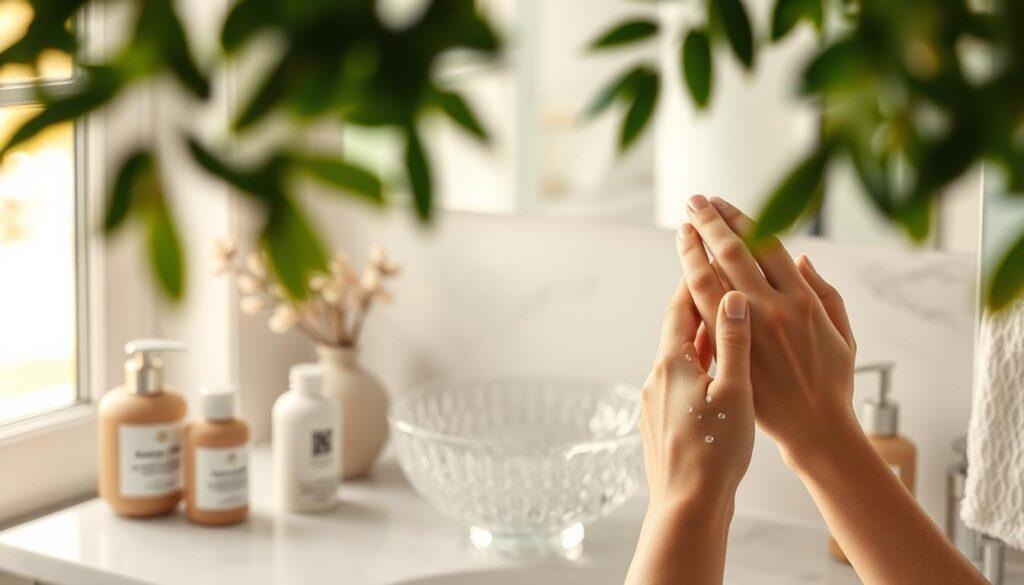
Choosing a Gentle Cleanser
I’ve learned that a gentle cleanser is key to removing dirt and oil without stripping moisture. Harsh products can disrupt the skin’s barrier, leading to more oil production. My go-to is CeraVe’s Foaming Cleanser, which effectively cleans without over-drying.
Salicylic acid-based cleansers are also a great option. They help unclog pores and reduce breakouts. As one dermatologist shared,
“A gentle, non-drying formula is crucial for maintaining hydration while managing oil.”
Effective Toning Techniques
After cleansing, I use an alcohol-free toner to calm my skin and prep it for the next steps. Witch hazel-based toners are my favorite—they refine pores and reduce oiliness without irritation. Paula’s Choice Skin Perfecting Toner is a staple in my routine.
Toners also help restore the skin’s pH balance, which is essential for preventing breakouts. I apply it with a cotton pad, gently swiping it across my face. This step leaves my skin feeling refreshed and ready for treatment.
The Benefits of Double Cleansing
On days when I wear heavy makeup or sunscreen, I rely on double cleansing. This two-step process ensures a deeper clean. I start with an oil-based cleanser to break down makeup, followed by a water-based one like La Roche-Posay’s Toleriane Purifying Foaming Cleanser.
Double cleansing removes impurities without stripping moisture. It’s a simple yet effective way to keep my skin clear and hydrated. Plus, it helps my other products absorb better.
| Step | Product | Purpose |
|---|---|---|
| Cleanse | CeraVe Foaming Cleanser | Remove dirt and oil |
| Tone | Paula’s Choice Skin Perfecting Toner | Refine pores and balance pH |
| Double Cleanse | La Roche-Posay Toleriane Purifying Foaming Cleanser | Deep clean and hydrate |
By incorporating these rituals into my daily routine, I’ve seen a noticeable improvement in my skin’s texture and hydration. Consistency is key, and I encourage you to find what works best for you.
Targeted Treatments and Key Ingredients for Oily Skin
Targeting excess oil requires the right ingredients and treatments. Over the years, I’ve discovered that certain components make a significant difference in managing shine and breakouts. Let’s dive into the essentials that have worked for me.
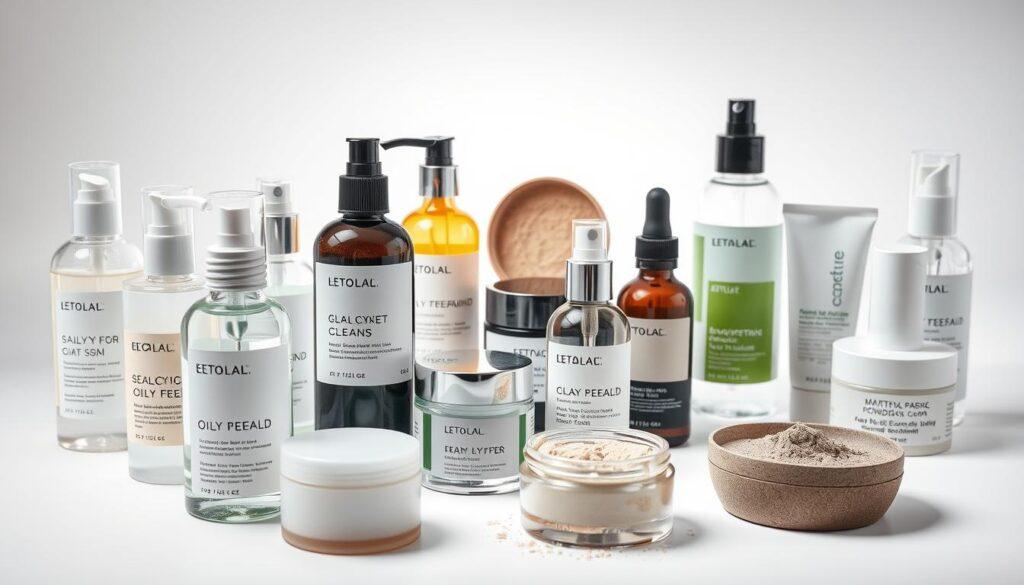
Active Ingredients to Look For
One of the most effective ingredients I’ve used is niacinamide. It helps regulate oil production while improving skin texture. Another favorite is hyaluronic acid, which hydrates without adding greasiness. These components are staples in my routine.
Retinol is another game-changer. It unclogs pores and reduces the appearance of fine lines. However, it’s essential to start slowly to avoid irritation. As one dermatologist advised,
“Retinol works best when introduced gradually, especially for sensitive or acne-prone skin.”
Salicylic acid is a must for refining pores and preventing breakouts. I use it in both cleansers and toners to keep my skin clear. These ingredients have transformed my approach to managing excess oil.
Personalized Treatment Options
Finding the right treatment depends on your skin’s needs. For me, combining a niacinamide serum with a retinol-based product has been effective. It’s all about balancing hydration and oil control.
If you’re unsure where to start, consider consulting a dermatologist. They can recommend personalized treatment options tailored to your skin type. For example, lightweight formulas work best for oily skin, while combination skin may require a mix of hydrating and mattifying products.
- Niacinamide: Controls oil and improves texture.
- Hyaluronic acid: Hydrates without clogging pores.
- Retinol: Refines pores and reduces breakouts.
By experimenting with these ingredients, I’ve found a routine that keeps my skin balanced and healthy. For more tips on managing oily skin, check out our personalized treatment options.
Finding the Perfect Moisturizer and Sunscreen for Oily Skin
Hydrating oily skin without adding shine can be tricky, but it’s entirely possible with the right products. Over the years, I’ve discovered that lightweight moisturizers and non-comedogenic sunscreens are essential for maintaining balance. Here’s how I’ve found the best options for my skin.
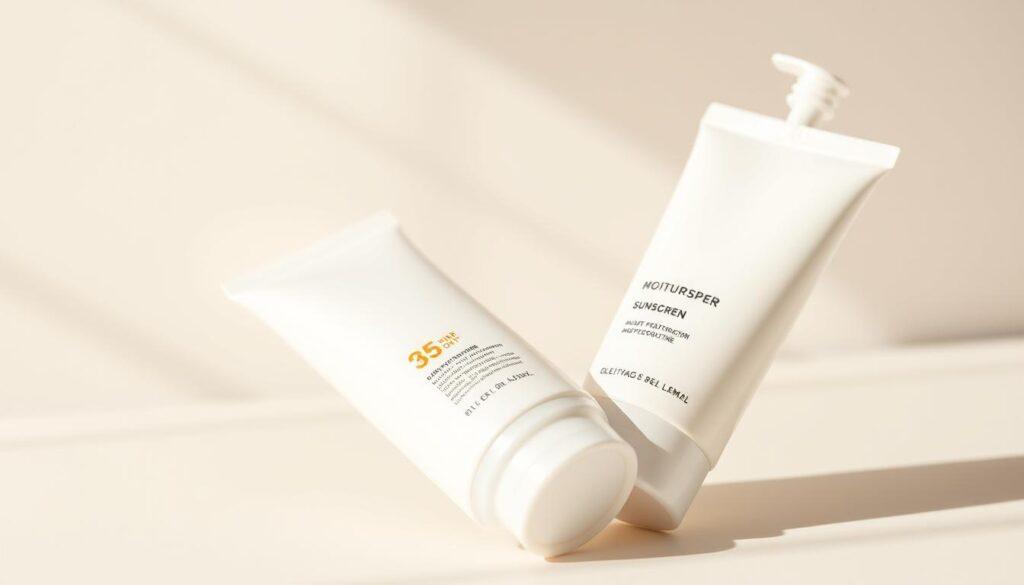
Lightweight Moisturizers That Hydrate
Finding a moisturizer that hydrates without causing breakouts was a game-changer for me. I look for formulas that are oil-free and contain ingredients like hyaluronic acid and niacinamide. These components deliver hydration without clogging pores.
CeraVe’s Ultra-Light Moisturizing Lotion is one of my favorites. It’s lightweight, absorbs quickly, and leaves my skin feeling soft without any greasiness. As one dermatologist shared,
“Hydration is key for oily skin—it helps regulate oil production and keeps the skin barrier healthy.”
Another great option is La Roche-Posay’s Toleriane Double Repair Face Moisturizer. It’s non-comedogenic and packed with ceramides, which help restore the skin’s natural barrier. These products have become staples in my daily care routine.
Non-Comedogenic Sunscreen Choices
Protecting my skin from UV damage is a priority, but finding a sunscreen that doesn’t leave a greasy residue was challenging. I now swear by non-comedogenic formulas that are lightweight and oil-free.
EltaMD UV Clear Broad-Spectrum SPF 46 is my go-to. It’s designed for sensitive skin and contains niacinamide, which helps control shine. Another favorite is Neutrogena’s Oil-Free Moisture with SPF 30. It’s hydrating, matte, and perfect for daily use.
When choosing a sunscreen, I always check for “non-comedogenic” on the label. This ensures the product won’t clog pores or cause breakouts. For more on the benefits of niacinamide, check out this detailed guide.
| Product | Key Feature | Brand |
|---|---|---|
| Ultra-Light Moisturizing Lotion | Lightweight, oil-free | CeraVe |
| Toleriane Double Repair Face Moisturizer | Non-comedogenic, ceramides | La Roche-Posay |
| UV Clear Broad-Spectrum SPF 46 | Niacinamide, oil-free | EltaMD |
| Oil-Free Moisture SPF 30 | Hydrating, matte finish | Neutrogena |
By incorporating these products into my routine, I’ve achieved a balance of hydration and protection. Consistency and the right formulations make all the difference for oily skin.
My Morning Routine for a Shine-Free Complexion
Starting my day with a simple yet effective routine has been the key to keeping my complexion shine-free. By focusing on hydration and balance, I’ve found a plan that works wonders for my skin. Let me walk you through the steps I take every morning.

Establishing Simple, Effective Steps
My morning routine begins with a gentle cleanse. I use La Roche-Posay’s Effaclar Purifying Foaming Gel Cleanser to remove impurities without stripping moisture. This sets the stage for the rest of my routine.
Next, I apply a hyaluronic acid serum to hydrate my skin. This ingredient is a game-changer—it locks in moisture without adding greasiness. I’ve noticed a significant improvement in my skin’s texture since incorporating it.
Having options for every skin concern is crucial. For example, if I’m dealing with redness, I’ll use a calming toner like Paula’s Choice Skin Balancing Pore-Reducing Toner. It’s all about tailoring the routine to my needs.
This routine sets a positive tone for the day, ensuring my skin feels fresh and balanced. Consistency is key, and I’ve seen how sticking to this plan improves my overall appearance.
| Product | Purpose | Brand |
|---|---|---|
| Effaclar Purifying Foaming Gel Cleanser | Gentle Cleansing | La Roche-Posay |
| Hyaluronic Acid Serum | Hydration | Allies of Skin |
| Skin Balancing Pore-Reducing Toner | Calming and Refining | Paula’s Choice |
By following these steps, I’ve achieved a shine-free complexion that lasts throughout the day. It’s a simple routine, but it makes all the difference.
Nighttime Skincare Strategies to Prevent Breakouts
Nighttime is when my skin gets the chance to heal and renew itself. This is why I’ve developed a routine that focuses on repairing and preventing breakouts. By using the right products and techniques, I’ve seen a significant improvement in my skin’s health.
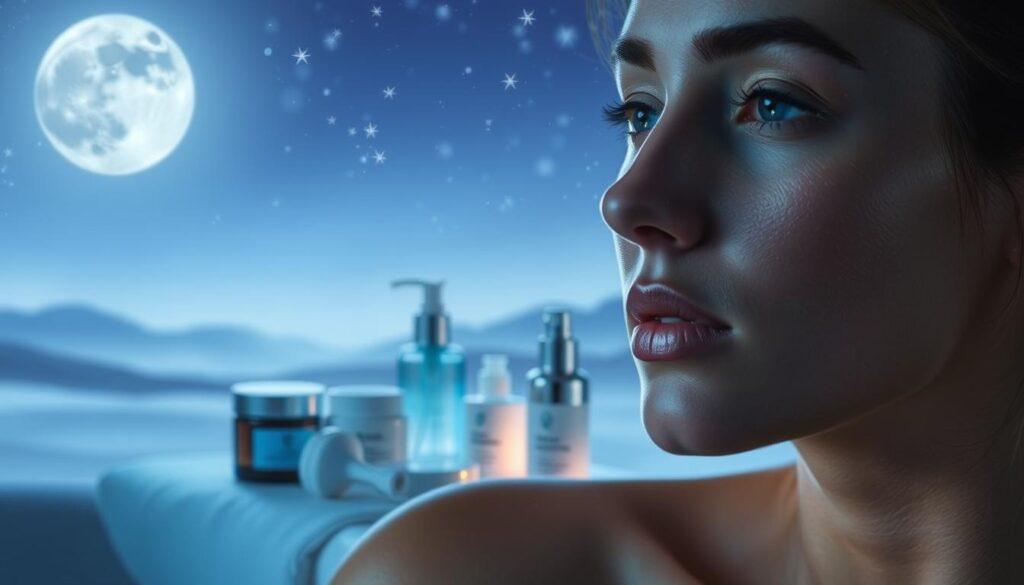
Exfoliation and Retinol Use
Exfoliation is a key step in my nighttime routine. It helps remove dead skin cells and unclogs pores, which is essential for preventing breakouts. I use a gentle exfoliator like Paula’s Choice SKIN PERFECTING 2% BHA Liquid Exfoliant twice a week. This keeps my skin smooth and clear without causing irritation.
Retinol is another game-changer. I’ve incorporated La Roche-Posay Effaclar Adapalene Gel into my routine to target acne acne-prone skin. It helps reduce breakouts and promotes skin renewal. As one dermatologist advised,
“Retinol works best when introduced gradually, especially for sensitive or acne-prone skin.”
Patience is crucial with retinol. It takes time to see results, but the wait is worth it. Over a few weeks, I noticed fewer breakouts and a more even skin tone.
Balancing active treatments with gentler steps is essential. After exfoliating or applying retinol, I use a hydrating moisturizer to soothe my skin. This ensures my skin recovers overnight and stays healthy.
- Exfoliation removes dead skin cells and prevents clogged pores.
- Retinol reduces breakouts and promotes skin renewal.
- Hydration is key to balancing active treatments.
By following these strategies, I’ve managed to keep my skin clear and healthy. Consistency and the right products make all the difference.
Conclusion
Achieving balanced skin is possible with the right approach and products. By focusing on gentle cleansing, hydrating with water-based treatments, and using targeted formulas, I’ve seen a dramatic improvement in my skin’s health. Consistency is key—whether it’s a morning cleanse or a nighttime treatment, sticking to a plan makes all the difference.
Choosing the right product is crucial. Look for lightweight, non-comedogenic options that work with your skin’s needs. For me, incorporating ingredients like niacinamide and hyaluronic acid has been a game-changer. These formulas hydrate without adding shine, keeping my skin balanced and healthy.
Customizing your routine oily practices is essential. What works for one person may not work for another. Experiment with different products and techniques to find what suits you best. Remember, patience and persistence are vital in preventing damage and achieving long-term results.
With the right approach, managing excess oil and maintaining healthy skin is entirely achievable. Start small, stay consistent, and enjoy the journey to a radiant, shine-free complexion.

